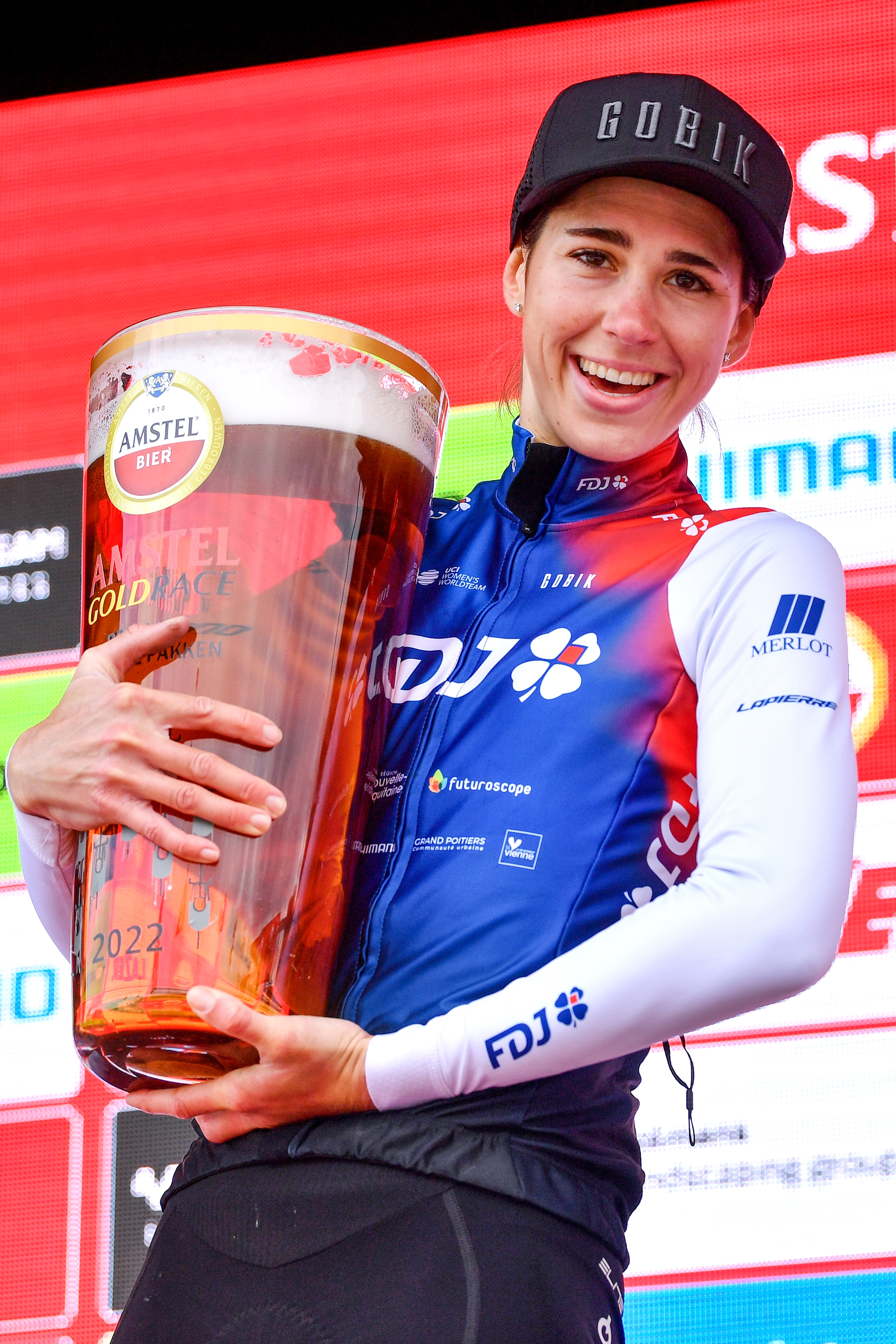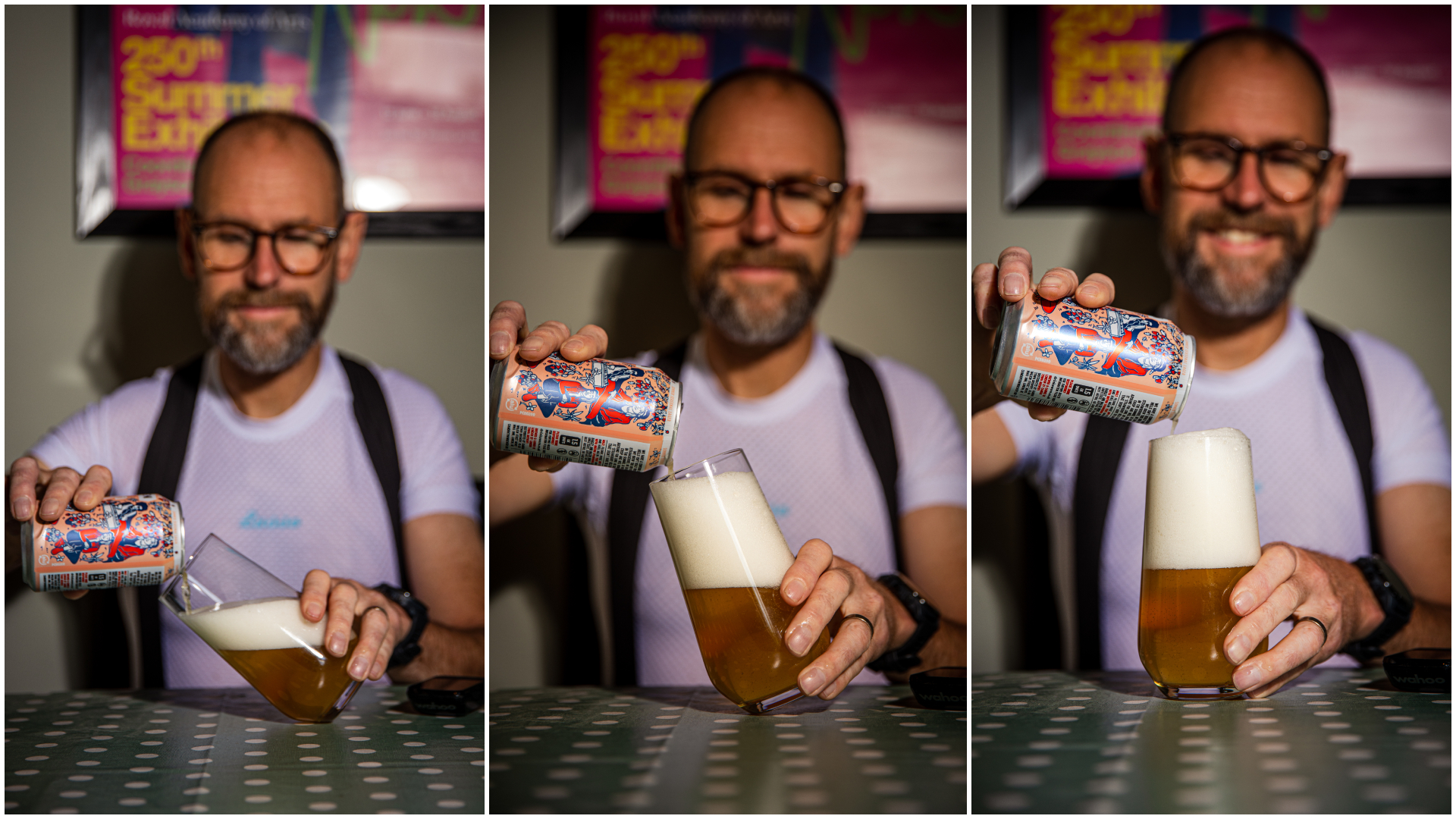Cycling and Beer: The history behind a match made in heaven
Nothing tastes better than a cold pint after a hot summer’s day ride, but the connection between cycling and beer goes far deeper than that, as David Jesudason explains


As the sun sets, the pints rise. It’s been a hot, sweaty day cycling around the beautiful Romney Marsh in Kent, and now it’s time for a beer in a village pub where thirsty riders like me feel they have earned a lager, IPA or pale ale. The pub garden reverberates with chatter about the highlights from the day’s riding, and the ales act as both refreshment and a social lubricant, oiling the chain of cyclists’ storytelling. This scene, timeless and synonymous with British summers, is for many of us a treasured part of our cycling year, when pubs and pints become a regular fixture of our weekend rides.
It’s time to take a step back and consider how beer and cycling, two very different cultures, became interwoven. In pub gardens across the country, Lycra-clad drinkers lap up the ambience among non-cyclist locals, but how and why did this scene become commonplace – not just in the UK, but throughout Europe? To find the answer, you have to go back a long way, because beer and cycling have an enduring history. Pubs, breweries and, now, taprooms seeking to profit from the ‘pedal pound’ might seem very modern but, in fact, cycling has had an intimate relationship with alcohol right from the start.
In the early days of the Tour de France, riders would stop off at bars for ‘refreshment’ during the race. The first Tour winner, Maurice Garin, in 1903, was fuelled by strong red wine, coffee, champagne, and oysters. Even so, he won by a margin of nearly three hours. Similarly, in the late- Victorian period, members of the first cycling clubs rode out from city to countryside to enjoy bucolic refreshment. Photographs from this era show flat-capped riders with long socks and neat blazers making frequent stops for food and – guess what? – beer. Gradually this helped make cycling more accessible. “Stops for food and drink at pubs,” says cycling historian Will Manners, “created opportunities for members of different ages to interact and socialise with each other more or less as equals.”
It wasn’t just the UK that had a nascent drinking and cycling culture. In Belgium, cycling club culture and drinking culture developed hand in hand – less dangerous than it sounds, as before the second world war Belgian beers weren’t as strong as they are today. In the Flanders region, cycling to bars became common – something that has continued to this day. And of course, there is now a huge drinking culture at Belgian bike races. “Cyclo-cross racing has a stronger beer tradition than road riding,” says Nigel Brook, who works at XO Bikes in Lewisham. “There are beer tents designed in such a way that the race goes through the middle, the riders passing by while you’re drinking your beer and eating your frites!”

Winning the Amstel Gold Race is thirsty work
Cyclist by name, beer by nature
Many beer origin stories sound like they were cobbled together after a few too many pints. Did a German innkeeper really spawn the internationally renowned radler just by adding lemonade to his beer to slake the thirst of a bunch of thirsty riders? Truth or myth, proper radlers are infinitely tastier than the bland shandies such as Bass that were popular in the 1980s. Grapefruit Stiegl Radler, for example, which is only 2%, is really tangy, cloudy and delicious. Germany’s tradition of brewing lower-alcohol beers means the radler was always aimed at a mature, beer-savvy market, and Bitburger’s offering is one for lager connoisseurs. It’s a 50% combination of pilsner (lightly hopped beer) and 50% lemonade, with both flavours battling each other – intense citrus balancing out the bitter hoppiness of the pils. Whatever its origins, after a long ride, you’ll be glad that someone, somehow invented the radler.
It was Germany, though, that launched the first cycling-themed ‘radler’ beer (radler means cyclist in German). It was in 1920 that Deisenhofen innkeeper Franz Kugler is said to have mixed beer with lemonade in order to serve a huge number of cyclists. Whether this legendary story is true or not, it does underscore that a lot of people were cycling and enjoying beer at the time. German- style radler (or shandy as it’s usually called in Britain) was popular from about 1912 onwards. The low-alcohol beers so popular today are perhaps a legacy of that original radler.
Joined at the sip
These days there are many cycling- themed beers, intertwined with the craft beer movement, such as New Belgium Brewery’s Colorado-brewed blonde ale Fat Tire or Derailleur Ale produced by Utah’s Moab Brewery – both are available from online beer specialists. Closer to home, you may be surprised that traditional cask beer also has made its mark on the British cycling scene with St Austell Brewery, which makes Proper Job and Tribute among others, sponsoring fellow Cornish Continental team Saint Piran.
“You might think beer and cycling are diametrically opposed,” says Ricci Pascoe, team owner of Saint Piran, “but it’s quite the contrary. The biggest thing – even at the highest level – is the social enjoyment of the sport, and you cannot underestimate the gift that beer and pubs give in [contributing towards] a relaxing environment.” There is a local connection, too, he explains. “St Austell represents the region and has a strong identity. And you can do something that’s extremely healthy, like cycling, and enjoy drinking at the same time.”
The latest race content, interviews, features, reviews and expert buying guides, direct to your inbox!
The rise of beer and cycling in a social setting has been further boosted by the rise of the taproom, where smaller, so-called micro- breweries sell direct to punters from their tanks. “When people first go for a beer in cycling gear they may feel self-conscious,” says Steve Dunkley, a brewer from Manchester’s Beer Nouveau who is also a keen cyclist, “but genuinely no one cares. The people who frequent brew taps and craft beer bars tend to be much more accepting and welcoming [than traditional pub-goers].” Dunkley collates examples of such conviviality on his YouTube channel, on which he interviews beer-makers at their taprooms around the country.

There is, of course, a potential downside to combining drinking and cycling – this writer took risks in his youth of which he is not proud. Although cycling deaths related to excess alcohol are low, the risks are clear. If you do get carried away and have a few too many, it’s always better to use public transport or phone for a lift.
What about those more serious about their health and fitness, is beer a bad idea? Not necessarily. A sessionable beer of up to 4% alcohol pint is actually very effective for post- workout rehydration, provided you don’t go beyond a pint or two. Bear in mind too that there are about 180kcal per pint – not great for weight control.
Then again, there is always non- alcoholic beer and our cycling-inspired radler. German brewer Erdinger even makes an isotonic beer – keeping hydrated and enjoying a beer are not necessarily incompatible. So, knowing that post-ride beers are a long-held tradition, it’s a habit I don’t intend to give up any time soon. And after a hard ride, when you’ve really earned it, the beer tastes even better.
Tempo to taproom: two of the best
De Coureur, Leuven, Belgium
Its name means cyclist, and this taproom started brewing just before the first lockdown. In fact, its first brew was ready just as hospitality was forced to close. De Coureur specialise in strong imperial stouts and more traditional Belgium staples (sours and saisons). The spacious taproom means De Coureur lives up to its name, offering riders a chance to bring their bikes in and sup beer after a ride in the Flemish countryside.
Torrside Taproom, Derbyshire
Torrside is renowned for its dark, smoked beers. Thirsty cyclists will adore the fruity but light All of The Klaxons pale ale. Getting to Torrside is a beautiful ride from Manchester or Sheffield and the beer is just as easy on the eye, as the pints look incredible when poured with large cloudy heads.

David Jesudason won the British Guild of Beer Writers’ Beer Writer of the Year award in 2023.